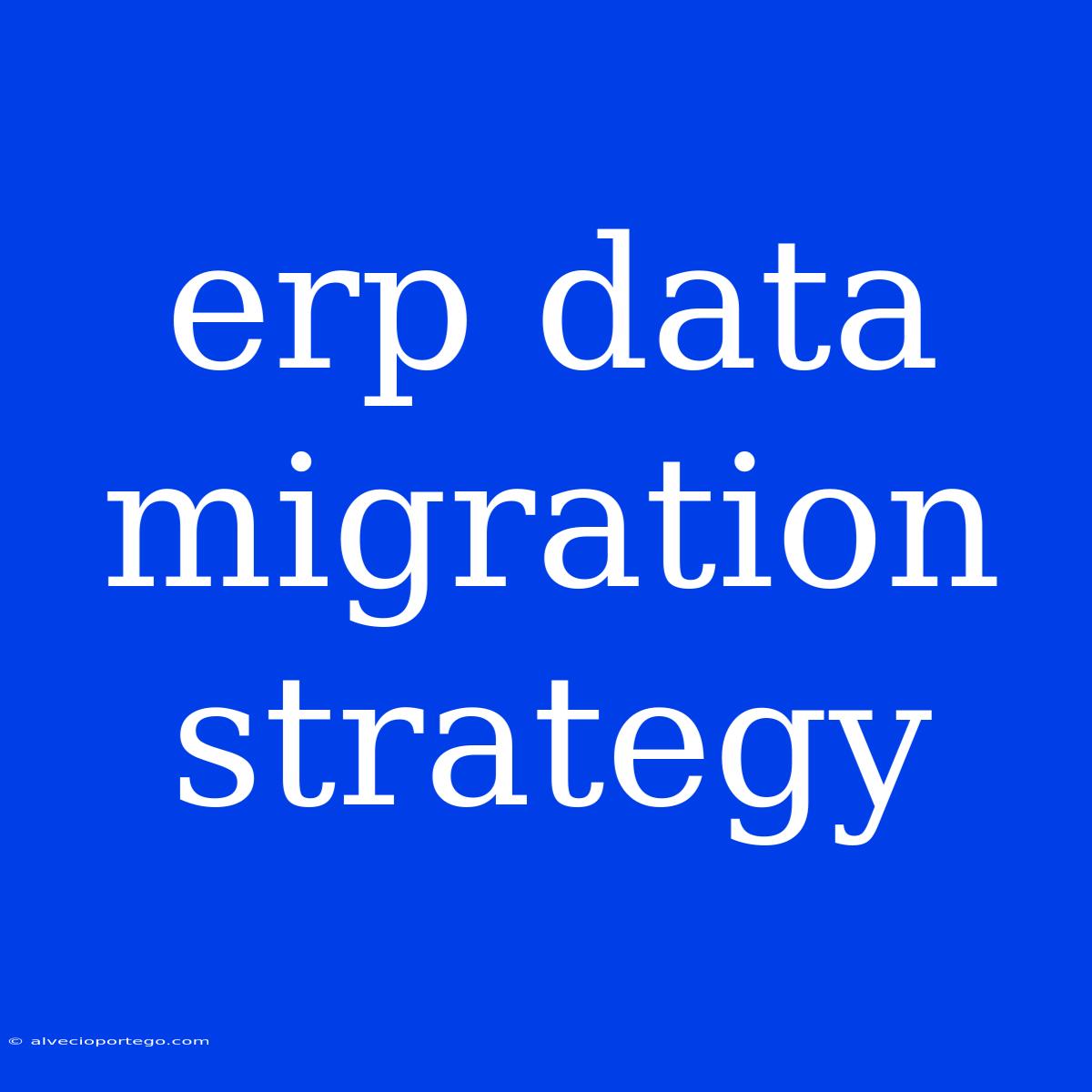ERP Data Migration Strategy: A Comprehensive Guide
Implementing a new ERP system is a major undertaking for any organization. A critical element of this process is the data migration strategy, which involves transferring data from your existing systems to the new ERP. A well-defined and executed data migration strategy is essential for a smooth transition and a successful ERP implementation.
Here's a comprehensive guide to help you develop and implement a robust ERP data migration strategy:
1. Understand Your Data and Requirements
Before you start migrating data, you need to understand what data you need to move and why.
- Data Inventory: Conduct a thorough data inventory to identify all the data sources, types of data, and the volume of data you need to migrate.
- Data Quality Assessment: Evaluate the quality and accuracy of your existing data. Identify and address any data inconsistencies, duplicates, or missing values.
- Business Requirements: Define your business requirements for the new ERP system. What data is essential for day-to-day operations, reporting, and analysis?
- Target System Data Model: Understand the data model of the new ERP system and how your data will be structured and mapped in the new environment.
2. Define the Scope of Migration
Not all data needs to be migrated to the new ERP.
- Critical vs. Non-Critical Data: Prioritize data migration based on its importance to your business.
- Data Transformation: Decide which data needs to be transformed, cleaned, or normalized before migrating.
- Data Archiving: Identify data that can be archived or deleted, as it may not be required in the new system.
3. Choose a Migration Method
Several methods can be used for data migration. Choose the best option based on your specific needs.
- Direct Migration: This method involves directly transferring data from your existing system to the new ERP. It is suitable for small data volumes and simple data structures.
- Batch Migration: This method involves transferring data in batches, allowing for data cleansing and validation between batches. It is a suitable option for larger datasets.
- Incremental Migration: This method involves migrating data in stages, starting with the most critical data first. It allows for continuous data availability during the migration process.
- Real-Time Migration: This method involves transferring data in real-time as it is updated in your existing system. It is ideal for systems where continuous data access is crucial.
4. Develop a Migration Plan
A detailed plan is essential for a successful migration.
- Timeline: Create a realistic timeline for the entire migration process, including data preparation, testing, and go-live.
- Resource Allocation: Identify and allocate resources, such as personnel, tools, and technology, needed for the migration.
- Data Mapping: Develop a detailed data mapping plan, defining how each data field from the source system will be mapped to the target system.
- Testing: Plan for rigorous testing of the migration process to ensure data accuracy, integrity, and consistency.
- Rollback Plan: Develop a rollback plan in case of any migration failures or issues.
5. Implement and Monitor
Once your plan is in place, it's time to implement and monitor the migration process.
- Data Preparation: Cleanse, transform, and validate your data before migration.
- Migration Execution: Execute the migration process according to the plan, using the chosen migration method.
- Testing and Validation: Thoroughly test the migrated data in the new system to ensure accuracy and completeness.
- Post-Migration Support: Provide ongoing support and maintenance to address any post-migration issues or data discrepancies.
6. Data Security and Compliance
Data security and compliance must be a top priority during data migration.
- Data Encryption: Secure your data in transit and at rest using encryption techniques.
- Data Access Control: Implement strict access control measures to prevent unauthorized access to your data.
- Regulatory Compliance: Ensure that your data migration process complies with all relevant data privacy and security regulations, such as GDPR or HIPAA.
Conclusion
A successful ERP data migration strategy is crucial for a smooth transition and a successful ERP implementation. By following the steps outlined above, you can ensure a well-defined and executed migration process that delivers accurate, complete, and secure data in the new system.

